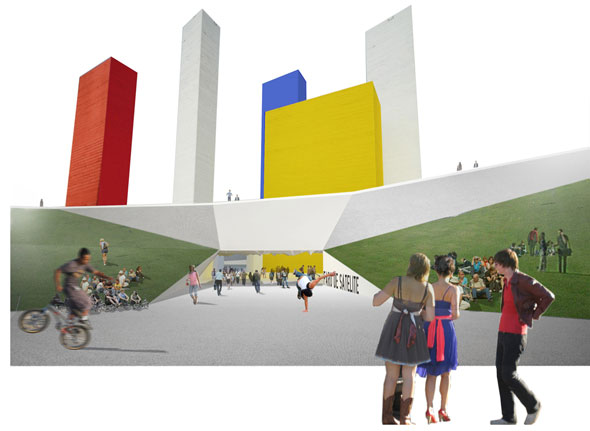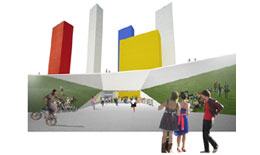NEWS
COMPETITIONS
Chrysokona Mavrou, Maria Papafigou, Anna Laskari and Johan Annerhed received the first mention at the international competition of the Arquine Magasine (Mexico) with the the project “HILOS DE ARIADNE” (ariadnes threads).
On the occasion of the 50th anniversary of the monument «Torres de Satélite», designed by Luis Barragán and Mathias Goeritz (1958), ARQUINE magazine organized an international architectural competition proposing to create a centre of Arts & Crafts (FARO - Fabrica de Artes y Oficios) in the base of the monument. The monument, symbol of Mexican modernism and a landmark for the area Ciudad Satelite, is a composition of five triangular prismatic volumes that range in height from 30 to 52 meters.
The “towers”, designed according to the machine age ideals to be experienced from the car in motion, form a plaza between the lanes of the motorway. Main goal of the competition is to create an accessible public space that will redefine the character of the square and recontextualise it through its connection with the city.
The proposed intervention consists of a territorial formation in a location that is characterised by the monumental identity of the “Torres de Satélite”. The major concern was to connect the city, currently divided by the motorway, through the space of the towers, generating a new non-monumental public space in two levels that would function as a principal node in a network of pedestrian flows.
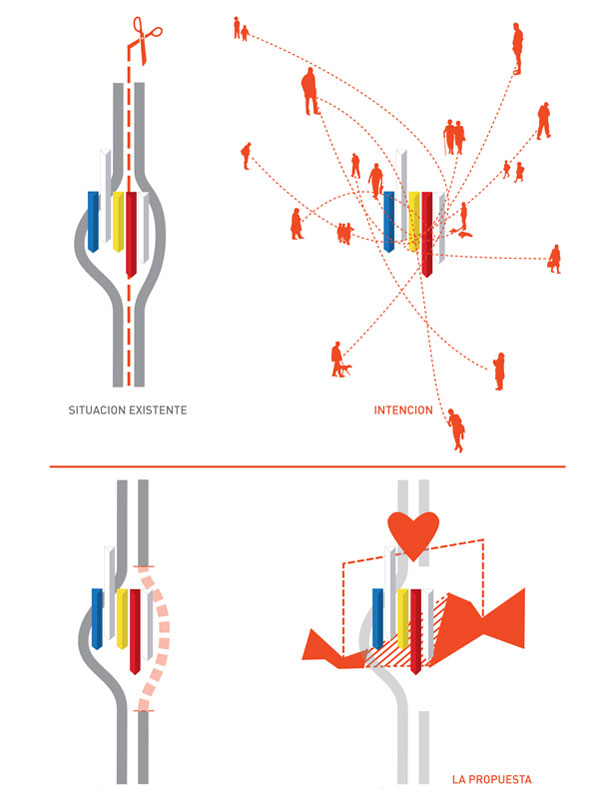
The lateral circulation at the East of the towers disappears by being converted to an underground passage and permits the direct pedestrian connection with the east part of the city on ground level. The programmatic content of the art centre activates an underground platform that serves as a principal east-west link.
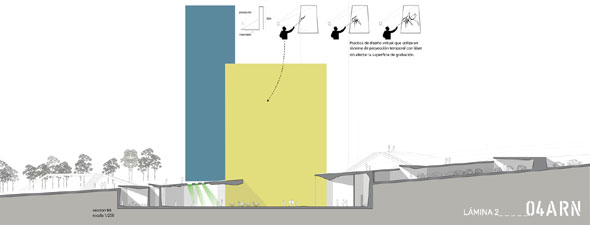
The organisation of a network of connections and the definition of a new manifestation of local identity is pursued through a diagrammatical analysis of the pedestrian routes between principal nodes on the square. This system of routes is organised geometrically through a tessellation of Voronoi polygons that define equidistant boundaries between points of interest. The Voronoi polygons are subjected to multiple interpretations to generate the design features that constitute the proposal.

At the level of the towers, the polygons organise the various elements that form the surface of the square. Soft and hard textures as well as openings that permit the penetration of natural light in the underlying level follow the pattern that organises the circulation.
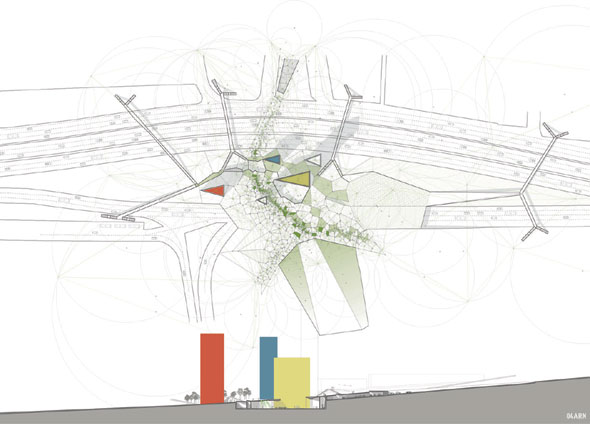
At the lower level, the polygons are extruded into prismatic forms of variable opacity, producing an interplay of light and shadow on the roof of the underground platform and creating a cavern-like ambience.
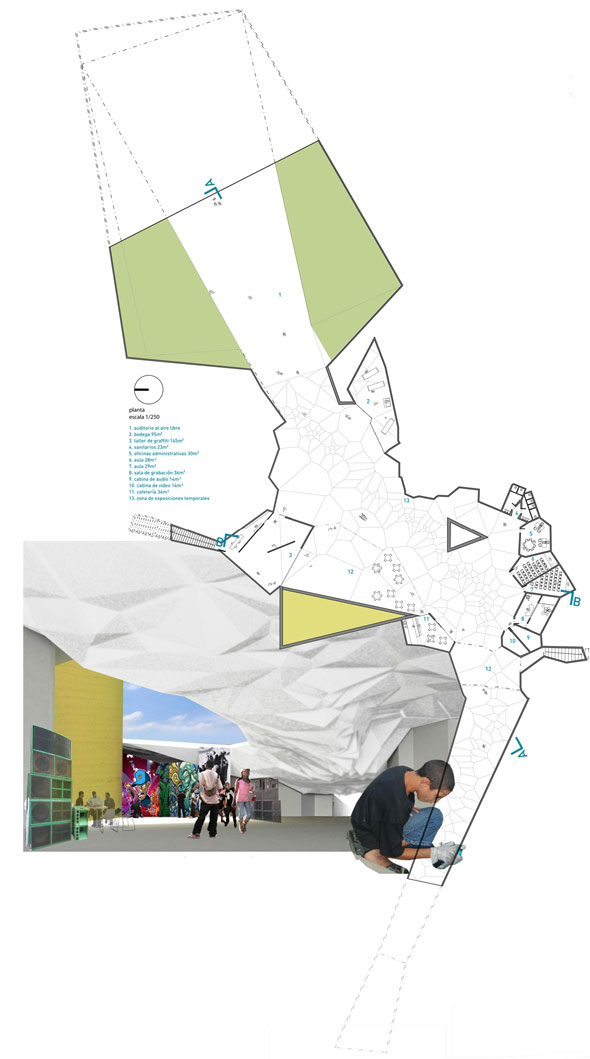
Prisms in selected areas are used as containers of algae which, through a system of tubes, capture CO2 produced by the motorway and the various activities of the “FARO” art centre. At the same time they produce O2, purifying the air and contributing to cleansing the environment of the neighbourhood.
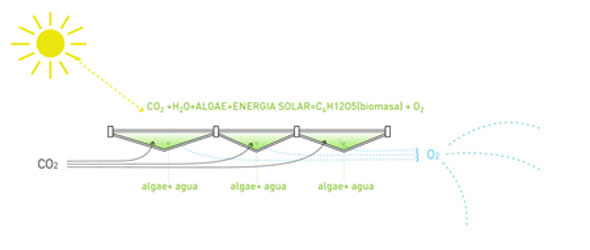
The towers constitute the centre of interest and the background to all expressions of life manifestations in the public space of the neighbourhood and act as the principal field of projection of the activities of the “Fabrica de Artes y Oficios”. In this framework, the towers preserve their signification as symbol of the modern era and gain a new content animated by the contemporary life of their urban context.
